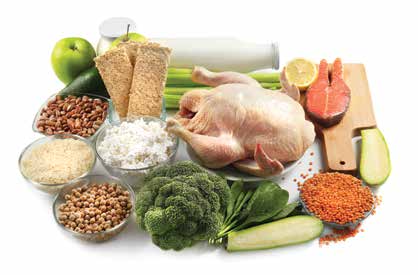
Wherever you turn these days, you find differing opinions on the “right way to eat.” There’s pescatarian, raw vegan, vegetarian, keto, paleo—and that isn’t even scratching the surface. So, what is a health conscious citizen to do? With just as many “experts” in each camp—with more “research” backing their theories than you can shake a kale leaf at—it has become harder than ever to sift through the cherry-picked study results and bogus testimonials of each fad diet. Enter Dr. Mark Hyman, public health expert and New York Times best-selling author. Hyman claims that he has been able to navigate through the chaotic world of health and nutrition to bring us a guide to—truly—the best way to eat.
The word “Pegan” first came on the scene in Dr. Hyman’s blog in 2014. A mashup of the vegan and paleo diets, Hyman coined the word as a way to describe the eating lifestyle he supports that’s based on the “highlights” of the vegan and paleo diets. “How do I eat?” Hyman rhetorically asks his readers. “After researching nutrition for 30 years and analyzing thousands of scientific papers and treating tens of thousands of patients with food, I vote for being a Pegan!”
You may be wondering what it means exactly to eat Pegan. Essentially, eating Pegan combines the vegan plant-based diet with some paleos responsibly raised meats and fish. Hyman provides a list of points that both vegan and paleo diets have in common before adding a few points that he has adopted from one diet or the other. The gist of this new hybrid diet focuses on a very low glycemic load—that means very little sugar, flour, and refined carbohydrates—and a ton of vegetables and low glycemic fruits, the more colorful the better. The Pegan diet also stresses the importance of non-processed, non-chemical natural foods. Basically—if you can’t pronounce the ingredients, it shouldn’t be put into your body.
He stresses the importance of adequate protein intake, especially for those who choose to forgo animal proteins. As both diets agree, Hyman encourages people to cut out dairy—“for most it contributes to obesity, diabetes, heart disease, and cancer and may increase (not decrease) the risk of osteoporosis.” Where the two diets differ, of course, is the consumption of animal products in one, such as lean meats, fish, and eggs. While the Paleo diet focuses on protein and the consumption of good fats, Hyman leans a little more toward the vegan camp on this one. “Eating a lot of meat puts pressure on the planet–more water use, more climate change, and more energy inputs. Eat meat as a side dish or condiment, and only consume grass-fed and sustainably raised,” advises Hyman.
Our advice? Take each diet’s claims with a grain of salt—unless you are on a low-sodium diet, of course. Everybody is unique. There is no one size fits all when it comes to nutrition. Use common sense. All you can do is research the facts and listen to what your body is telling you—and don’t get so caught up in what you can and can’t eat that you forget to enjoy life. Happy eating!
by Pax Ansley
Source: drhyman.com/blog/2014/11/07/pegan-paleo-vegan


